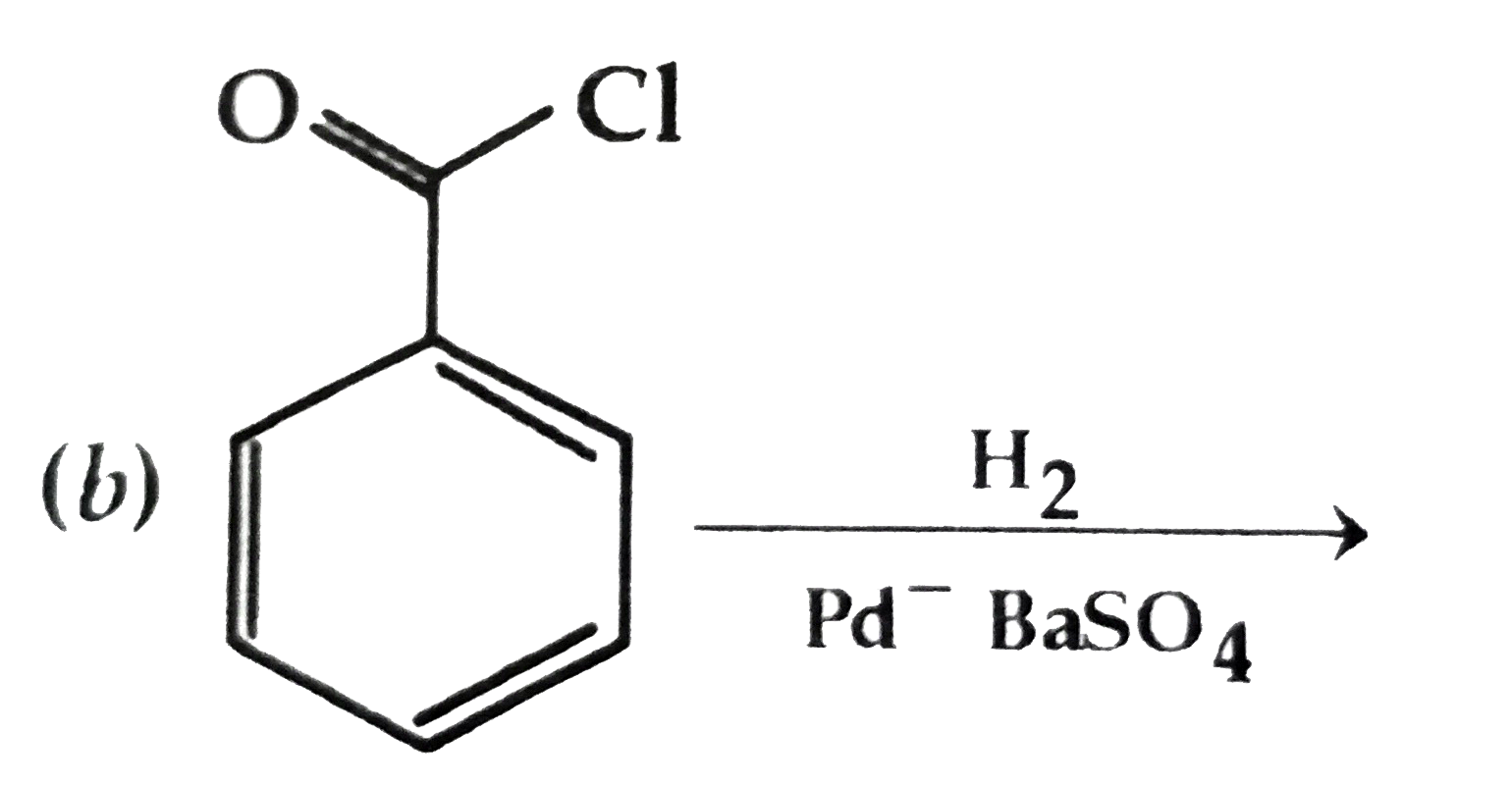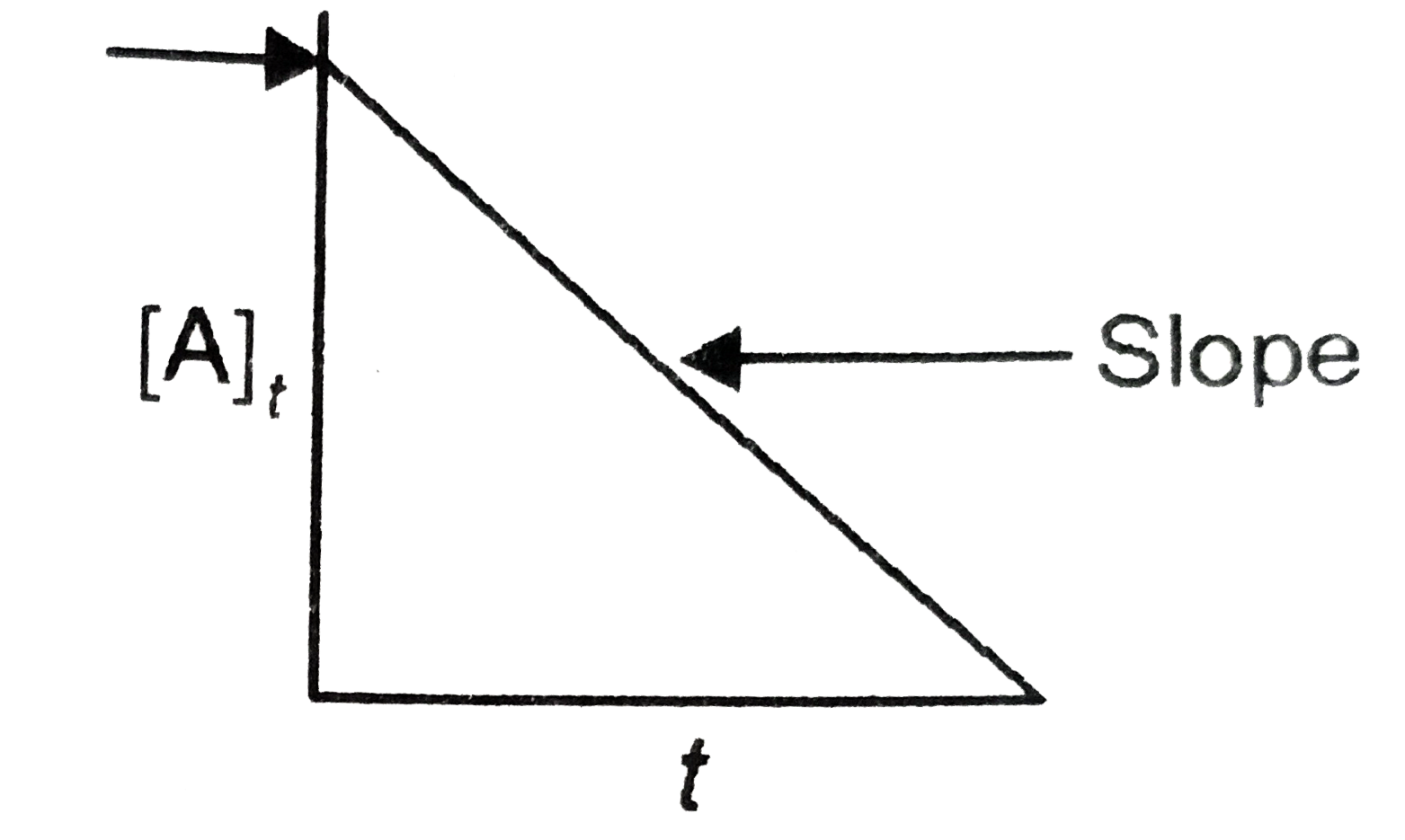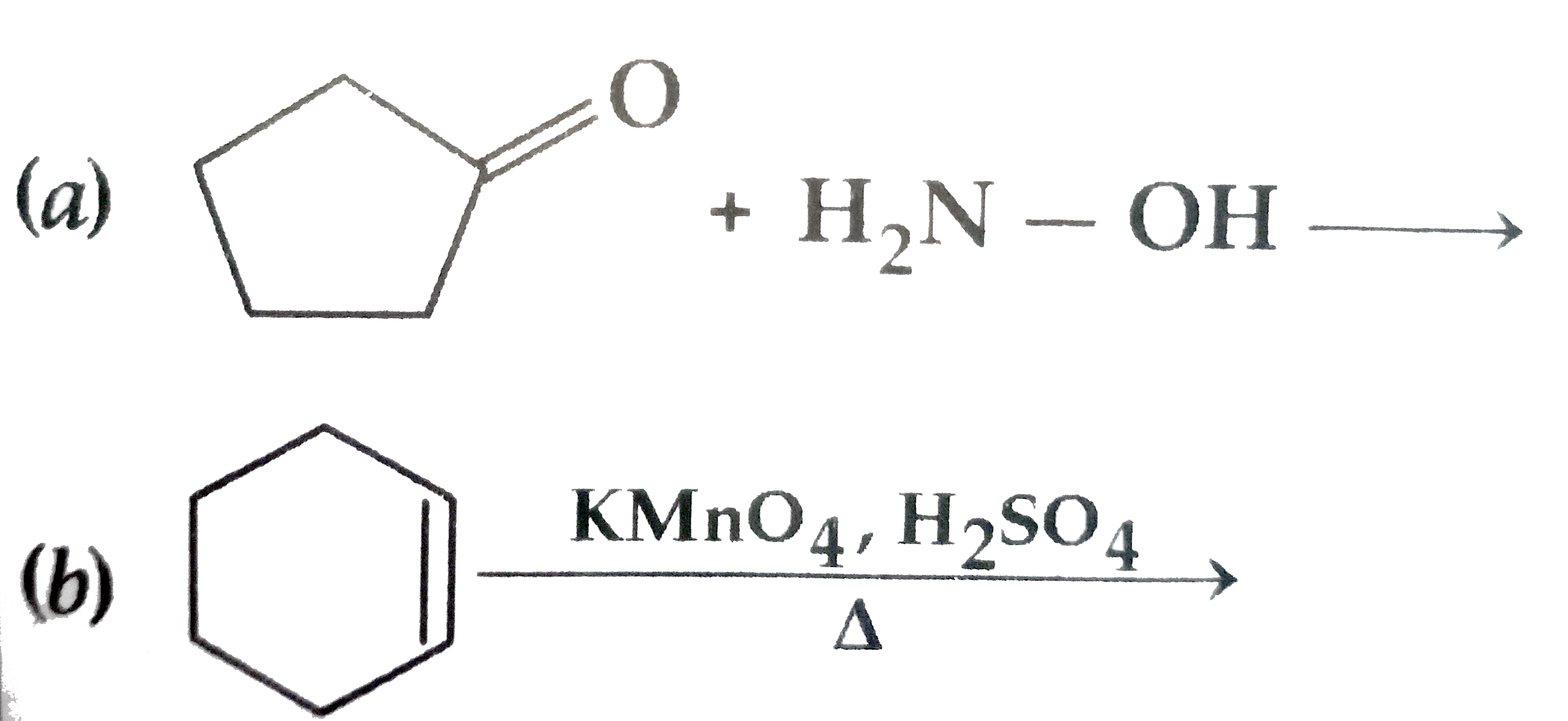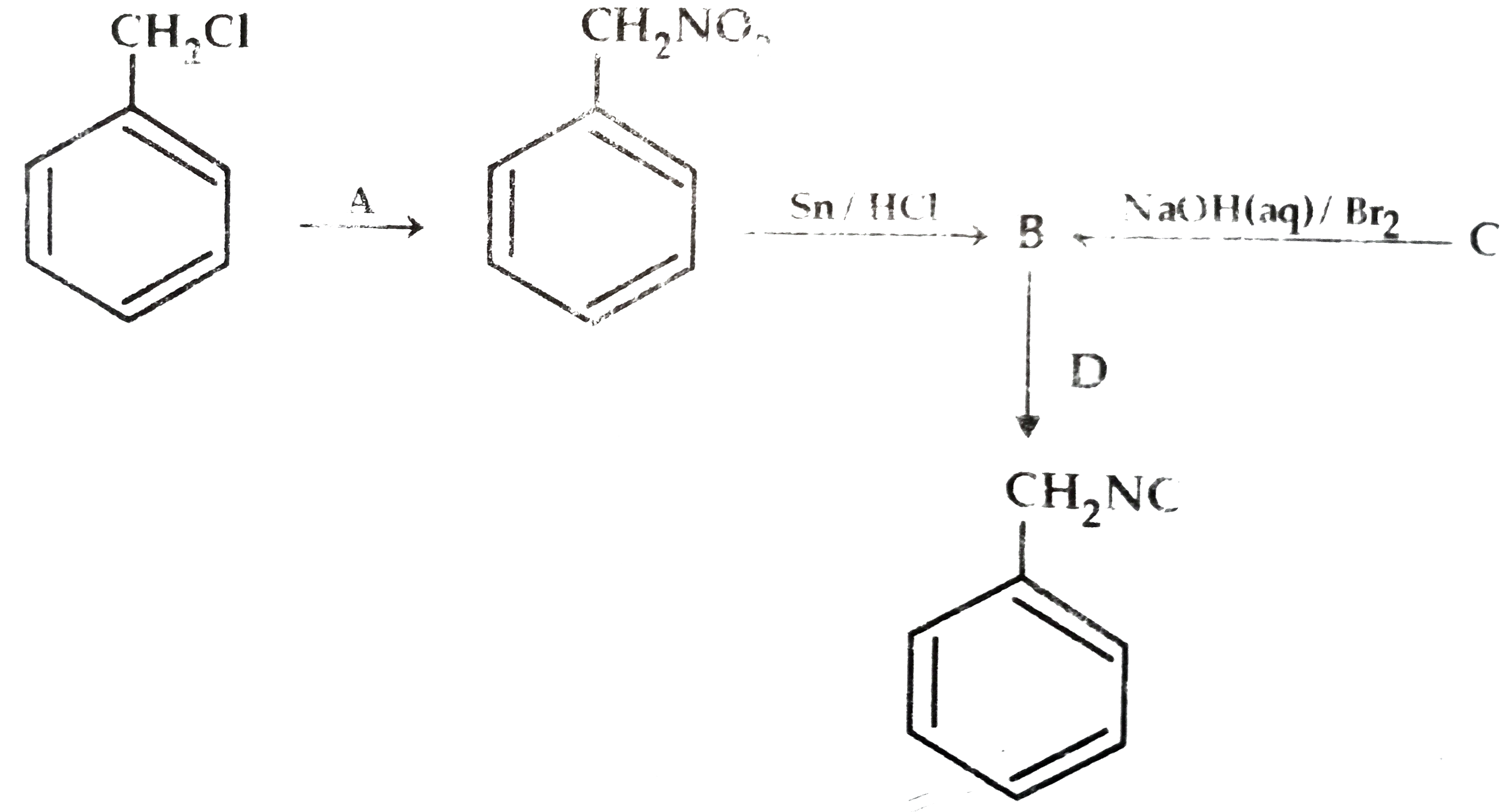QUESTION PAPER (SECTION-C) from XII BOARD PREVIOUS YEAR PAPER ENGLISH Chapter 20131:XII BOARDS for Class 12
| Class 12 | CHEMISTRY |
| Chapter | XII BOARDS |
| XII BOARD PREVIOUS YEAR PAPER ENGLISH | QUESTION PAPER (SECTION-C) |
| Medium | English |
| Academic Year | 2023-2024 |
Question 17
(i) On the basis of the standard electrode potential values stated for acid solutions, predict whether Ti4+ species may be used to oxidise Fe(II) to Fe(III)
Ti4++e−→Ti3+E∘=+0.01VFe3++e−→Fe2+E∘=+0.77V
(ii) Based on the data arrange Fe3+,Mn2+ and Cr2+ in the increasing order of stability of +2 oxidation state. (Give a brief reason)
E∘Cr3+/Cr2+=−0.4V
E∘Mn3+/Mn2+=+1.5V
E∘Fe3+/Fe2+=+0.8VView SolutionQuestion 19
Give reasons for the following :
(a) When 2g of benzoic acid is dissolved in 25 g of benzene, the experimentally determined molar mass is always greater than the true value.
(b) Mixture of ethanol and acetone shows positive deviation from Raoult's Law.
(c) The preservation of fruits by adding concentrated sugar solution protects against bacterial action. View SolutionQuestion 20
An alcohol [A] with molecules formula (C4H10O) o oxidation with aciddified potassium dichromate gives acid [B] (C4H8O2). Compound [A] when dehydrated with conc. H2SO4 at 443K gives compound [C]. Treatment of [C] with aqueous H2SO4 gives compound [D] (C4H10O) which is an isomer of [A]. compound [D] is resistant to oxidation but compound [A]can be easily oxidised. Identify [A], [B], [C] and [D]. Name the type of isomerism exhibited by [A] and [D].View SolutionQuestion 29
(a) A colloidal sol is prepared by the given method in figure. What is the charge of AgI colloidal particles in the test tube ? How is the sol formed, represented?
 (b) Explain how the phenomenon of adsorption finds application in Heterogeneous catalysis.
(b) Explain how the phenomenon of adsorption finds application in Heterogeneous catalysis.
(c) Which of the following electroytes is the most effective for the coagulation of Fe(OH)3 sol which is a positively charged sol?
NaCI,Na2SO4,Na3PO4View SolutionQuestion 32
Explain the following :
(a) Out of Sc3+,Co2+ and Cr3+ions, only Sc3+ is colourless in aqueous solutions. (Atomic no.: Co =27, Sc = 21 and Cr =24)
(b) The E∘Cu2+/Cu for copper metal is positive (+0.34), unlike the remaining members of the first transition series.
(c) La(OH)3 is more basic than Lu (OH)3.View SolutionQuestion 33
A metal complex having composition Cr(NH3)4CI2Br has been isolated in two forms A and B. The form A reacts with AgNO3 to give a white precipitate readily soluble in dilute aqueous ammonia whereas B gives a pale yellow precipitate soluble in concentrated ammonia.
(i) Write the formulae of isomers A and B.
(ii) State the hybridisation of chromium in each of them.
(iii) Calculate the magnetic moment (spin only) of the isomer A. View SolutionQuestion 35
(a) Account for the following :
(i) Direct nitration of aniline yields significant amount of meta derivative.
(ii) Primary aromatic cannot be prepared by Gabriel phthalimide synthesis.
(b) Carry out the following conversions :
(i) Ethanoic acid into methanamine.
(ii) Aniline to p-Bromoniline.
(c) Arrange the following in increasing order of basic strength :
Aniline, p-nitroaniline and p-toludine. View SolutionQuestion 36
(a) A cell is prepared by dipping a zinc rod in 1M zinc sulphate solution and a silver electrode in 1M silver nitrate solution. The standard electrode potential given :
E∘Zn2+1/Zn=−0.76V,E∘Ag+/Ag=+0.80V
What is the effect of increase in concentration of Zn2+ on the Ecell ?
(b) Write the products of electrolysis of aqueous solution of NaCI with platinum electrodes.
(c) Calculate e.m.f. of the following cell at 298 K:
Ni(s)/Ni2+(0.01M)//Cu2+(0.1M)/Cu(s)
[GivenE∘Ni2+/Ni=−0.025VE∘Cu2+/Cu=+0.34V]
Write the overall cell reaction. View SolutionQuestion 37
(a) Apply Kohlrausch law of independent migration of ions, write the expression to determine the limiting molar conductivity of calcium chloride.
(b) Given are the conductivity and molar conductivity of NaCI solutions at 298 K at different concentrations :

Compare the variation of conductivity and molar conductivity of NaCI solutions on dilution. Give reason.
(c) 0.1 M KCI solution offered a resistance of 100 ohms in conductivity cell at 298 K. If the cell constant of the cell is 1.29cm−1, calculate the molar conductivity of KCI solution. View SolutionQuestion 38
(a) Account for the following observations :
(i) SF4 is easily hydrolysed whereas SF6 is not easily hydrolysed.
(ii) Chlorine water is a powerful bleaching agent.
(iii) Bi (V) is a stronger oxidising agent than Sb(V)
(b) What happens when :
(i) White phosphorus is heated with concentrated NaOH solution in an inert atmosphere of CO2.
(ii) XeF6 undergoes partial hydrolysis.
(Give the chemical equations involved).View SolutionQuestion 39
(a) What inspired N.Bartlett for carrying out reaction between Xe and PtF6 ?
(b) Arrange the following in the order of property indicated against each set :
(i) F2,I2,Br2,CI2 (increasing bond dissociation enthalpy)
(ii) NH3,AsH3,SbH3,BiH3,PH3 (decreasing base strength)
(c) Complete the following equations :
(i) CI2+NaOH(cold and dilute)→
(ii) Fe3++SO2+H2O→View Solution
All Exercises from XII BOARD PREVIOUS YEAR PAPER ENGLISH Class 12 CHEMISTRY XII BOARDS
- C.B.S.E. CLASS-XII
- C.B.S.E. CLASS-XII
- C.B.S.E. CLASS-XII
- C.B.S.E. CLASS-XII
- ALL QUESTIONS
- ALL QUESTIONS
- C.B.S.E CLASS XII
- C.B.S.E. CLASS - XII
- CHEMISTRY (THEORY)
- CHEMISTRY (THEORY) [SET - I]
- GENERAL INSTRUCATIONS
- OUTSIDE DELHI (SET-I)
- OUTSIDE DELHI : SET-I
- QUESTION PAPER (SECTION-A)
- QUESTION PAPER (SECTION-B)
- QUESTION PAPER (SECTION-C)
- QUESTIONS
- SECTION-A
- SECTION-B
- SECTION-C
- SECTION-D
- SET - 1 COMPTT.
- SET -I
- SET I
- SET- I
- SET-1
- SET-I
- [SET-1]
- [SET-I]
- ALL QUESTIONS
- ALL QUESTIONS
- C.B.S.E CLASS XII
- C.B.S.E. CLASS - XII
- CHEMISTRY (THEORY)
- CHEMISTRY (THEORY) [SET - I]
- GENERAL INSTRUCATIONS
- OUTSIDE DELHI (SET-I)
- OUTSIDE DELHI : SET-I
- QUESTION PAPER (SECTION-A)
- QUESTION PAPER (SECTION-B)
- QUESTION PAPER (SECTION-C)
- QUESTIONS
- SECTION-A
- SECTION-B
- SECTION-C
- SECTION-D
- SET - 1 COMPTT.
- SET -I
- SET I
- SET- I
- SET-1
- SET-I
- [SET-1]
- [SET-I]
- ALL QUESTIONS
- ALL QUESTIONS
- C.B.S.E CLASS XII
- C.B.S.E. CLASS - XII
- CHEMISTRY (THEORY)
- CHEMISTRY (THEORY) [SET - I]
- GENERAL INSTRUCATIONS
- OUTSIDE DELHI (SET-I)
- OUTSIDE DELHI : SET-I
- QUESTION PAPER (SECTION-A)
- QUESTION PAPER (SECTION-B)
- QUESTION PAPER (SECTION-C)
- QUESTIONS
- SECTION-A
- SECTION-B
- SECTION-C
- SECTION-D
- SET - 1 COMPTT.
- SET -I
- SET I
- SET- I
- SET-1
- SET-I
- [SET-1]
- [SET-I]
- ALL QUESTIONS
- ALL QUESTIONS
- C.B.S.E CLASS XII
- C.B.S.E. CLASS - XII
- CHEMISTRY (THEORY)
- CHEMISTRY (THEORY) [SET - I]
- GENERAL INSTRUCATIONS
- OUTSIDE DELHI (SET-I)
- OUTSIDE DELHI : SET-I
- QUESTION PAPER (SECTION-A)
- QUESTION PAPER (SECTION-B)
- QUESTION PAPER (SECTION-C)
- QUESTIONS
- SECTION-A
- SECTION-B
- SECTION-C
- SECTION-D
- SET - 1 COMPTT.
- SET -I
- SET I
- SET- I
- SET-1
- SET-I
- [SET-1]
- [SET-I]
- DELHI BOARD : SET - II
- DELHI BOARD SET II
- OUTSIDE DELHI : SET-II
- OUTSIDE DELHI : SET-II
- OUTSIDE DELHI: SET-II
- SET - II
- SET -II
- SET II
- SET- II
- SET-II
- [OUTSIDE DELHI : SET - II]
- [OUTSIDE DELHI : SET -II]
- [SET-II]
- DELHI BOARD : SET - II
- DELHI BOARD SET II
- OUTSIDE DELHI : SET-II
- OUTSIDE DELHI : SET-II
- OUTSIDE DELHI: SET-II
- SET - II
- SET -II
- SET II
- SET- II
- SET-II
- [OUTSIDE DELHI : SET - II]
- [OUTSIDE DELHI : SET -II]
- [SET-II]
- DELHI BOARD : SET - II
- DELHI BOARD SET II
- OUTSIDE DELHI : SET-II
- OUTSIDE DELHI : SET-II
- OUTSIDE DELHI: SET-II
- SET - II
- SET -II
- SET II
- SET- II
- SET-II
- [OUTSIDE DELHI : SET - II]
- [OUTSIDE DELHI : SET -II]
- [SET-II]
- DELHI BOARD : SET - II
- DELHI BOARD SET II
- OUTSIDE DELHI : SET-II
- OUTSIDE DELHI : SET-II
- OUTSIDE DELHI: SET-II
- SET - II
- SET -II
- SET II
- SET- II
- SET-II
- [OUTSIDE DELHI : SET - II]
- [OUTSIDE DELHI : SET -II]
- [SET-II]
- DELHI BOARD : SET - III
- OUTSIDE DELHI : SET-III
- OUTSIDE DELHI : SET-III
- OUTSIDE DELHI BOARD: SET-III
- SET -III
- SET III
- SET- III
- SET-III
- [OUTSIDE DELHI : SET - III]
- [OUTSIDE DELHI : SET -III]
- [SET-III]
- DELHI BOARD : SET - III
- OUTSIDE DELHI : SET-III
- OUTSIDE DELHI : SET-III
- OUTSIDE DELHI BOARD: SET-III
- SET -III
- SET III
- SET- III
- SET-III
- [OUTSIDE DELHI : SET - III]
- [OUTSIDE DELHI : SET -III]
- [SET-III]
- DELHI BOARD : SET - III
- OUTSIDE DELHI : SET-III
- OUTSIDE DELHI : SET-III
- OUTSIDE DELHI BOARD: SET-III
- SET -III
- SET III
- SET- III
- SET-III
- [OUTSIDE DELHI : SET - III]
- [OUTSIDE DELHI : SET -III]
- [SET-III]
- DELHI BOARD : SET - III
- OUTSIDE DELHI : SET-III
- OUTSIDE DELHI : SET-III
- OUTSIDE DELHI BOARD: SET-III
- SET -III
- SET III
- SET- III
- SET-III
- [OUTSIDE DELHI : SET - III]
- [OUTSIDE DELHI : SET -III]
- [SET-III]








